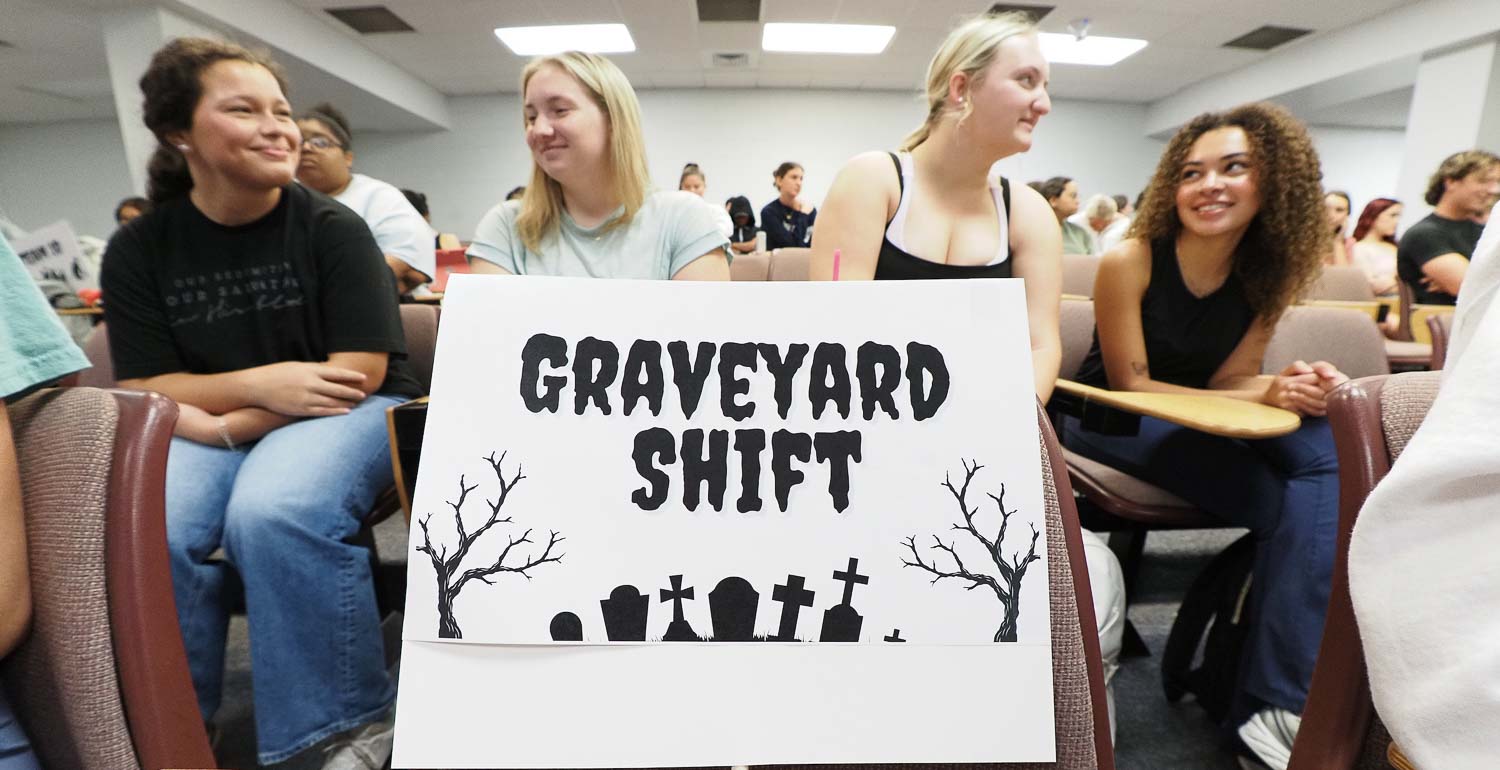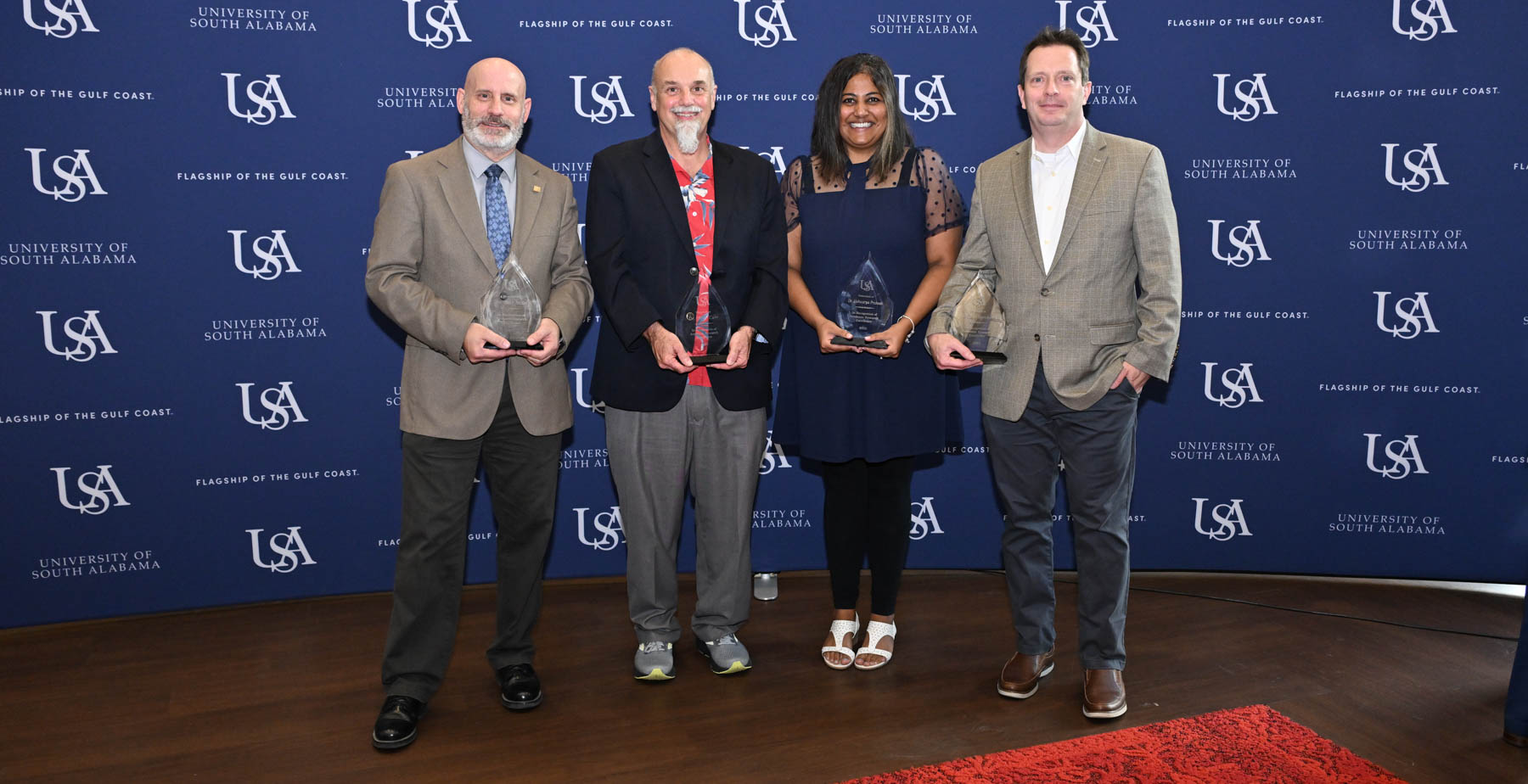Medicine From Bench to Bedside: USA Center for Lung Biology Propels to the Forefront of Translational Research
Posted on June 14, 2018

For more than 15 years, the University of South Alabama’s Center for Lung Biology has sought to advance the understanding of human health and disease while improving patient care and creating a state-of-the-art training environment for tomorrow’s clinicians and researchers.
Along the way, the center’s collaborative spirit has propelled it to the forefront of South’s translational research efforts to move research from bench to bedside.
From studying acute lung injury and pulmonary hypertension to airways, blood vessels, pulmonary endothelial cell and nano-scale respiratory cell biology, the center’s more than 40 faculty members and 25 postdoctoral fellows, clinical fellows and graduate students advance their respective fields and lend perspective and resources across program and department lines. To date, those efforts fuel everything from the search for definitive pulmonary hypertension biomarkers to aiding in the fight against antibiotic-resistant bacteria.
“We are fortunate to have some of the world’s leading pulmonary scientists and clinicians right here at USA. Our faculty and trainees are making great strides toward a better understanding of acute and chronic forms of lung disease and, based on this work, developing new biomarkers of disease and therapeutic options for the patients our clinicians serve,” said Dr. Troy Stevens, professor and Lenoir Louise Locke Chair of Physiology and Cell Biology at the USA College of Medicine and director of the USA Center for Lung Biology.
“Our faculty and trainees are making great strides toward a better understanding of acute and chronic forms of lung disease and, based on this work, developing new biomarkers of disease and therapeutic options for the patients our clinicians serve.”
The center’s work recently was bolstered by a $9.9 million five-year grant renewal from the National Institutes of Health.
Translational research in the simplest terms means applying laboratory- and preclinical study-discoveries to the development of clinical trials to engage community patient populations.
Consider, for instance, the work of Dr. Natalie Bauer, whose research represents the bench end of the translational research spectrum. Bauer, an associate professor of pharmacology at the USA College of Medicine, studies pulmonary hypertension, a progressive disease in which high blood pressure in the lungs leads to heart failure. She was recently awarded a four-year, $1.5 million grant from the National Institutes of Health to study how circulating factors contribute to pulmonary hypertension.
Through this new grant, Bauer is studying extracellular vesicles called microparticles that, despite their diminutive size, carry volumes of information about their source cells, such as the endothelial cells that line blood vessels.
“What we found in the model of the disease is that these microparticles can induce an inflammatory response that is specific to the pulmonary circulation. We also found they don’t seem to interact as much with the rest of the body, so now we’re trying to translate that with blood samples,” she said.
Enter Dr. Karen Fagan on the bedside end of the translational research spectrum with access to patients who are willing to contribute their blood samples to Bauer’s research. Fagan is the director of USA Health’s pulmonary and critical care division and director of the Pulmonary Hypertension Center.
“We’ve got the only pulmonary hypertension center on the northern Gulf Coast, so having this amazing collaboration with Natalie gives us an opportunity to learn about the disease, help predict who is going to do well or not, and ultimately better understand the biology of the disease,” said Fagan, who also holds an appointment to the Center for Lung Biology.
Bauer said, “The goal is to see if we see the same responses with human samples and lab samples. We’re trying to determine if microparticles from human cells do the same thing we’ve seen them do in rat cells.”
Moreover, Bauer is attempting to determine if the microparticles can ultimately serve as a biomarker for pulmonary hypertension, which remains difficult to diagnose.
“I couldn’t move my work forward in this way without collaborating the way I have with Dr. Fagan, and that’s why I think the USA Center for Lung Biology provides an excellent environment for practicing translational medicine,” Bauer said. “Maybe the physician scientist you work alongside inspires you to formulate an entirely different question that will truly help the patients. In the end, that’s everyone’s goal – figuring out what provides the best outcomes for the patients – and that’s why this approach works.”
“In the end, that’s everyone’s goal – figuring out what provides the best outcomes for the patients – and that’s why this approach works.”
Fagan, a professor of medicine and pharmacology, said the potential long-term developments for pulmonary hypertension patients are promising.
The ultimate goal is to develop new treatment plans and therapies that benefit patients and improve outcomes; occasionally there is the added bonus of witnessing a lab-born theory play out in real time with real patients.
“On our side, we work with the basic science researchers to develop research protocols and plans to identify those opportunities,” Fagan said.
In addition to advancing science and medicine, the Center for Lung Biology also supports the University’s education mission. Ph.D. candidate Sarah Voth called the working environment within the center “exceptionally collegial” and characterized collaboration as “integral to our ethos.”
“Both intra- and interdepartmental collaborations are quite common and highly encouraged. I believe this not only promotes rapport but greatly strengthens the quality of each individual investigator’s work through the incorporation of interdisciplinary perspectives and expertise,” said Voth, a predoctoral fellow in the lung biology track of the Basic Medical Sciences program in the College of Medicine.
Voth studies host pathogen interactions in the context of hospital-acquired pneumonia. Her research is “proving readily translatable to the clinic” in terms of pursuing development of broad-spectrum adjuvant therapies targeting hospital-acquired infections, as well as yielding “several readily available strategies for acute interventions for critically ill patients with nosocomial pneumonia.”
She said her training within the Center for Lung Biology has been critical to her education and professional development, all made possible via a National Institutes of Health T32 Training Grant through the center that has financed her stipend, books, software, project materials and research-related travel.
“Trainees in the Center for Lung Biology have the opportunity to learn from and interact with lead investigators and top medical scientists representing a wide variety of lung biology subspecialties,” Voth said. “This gives us a broad and rigorous background in the science, methods and perspectives relevant to the field that would not have been possible otherwise. The faculty truly are devoted to helping each student achieve their individual potential and career goals and readily make time to go above and beyond.”





